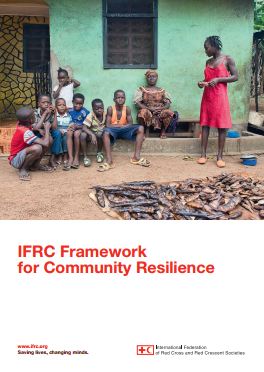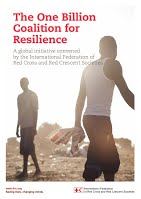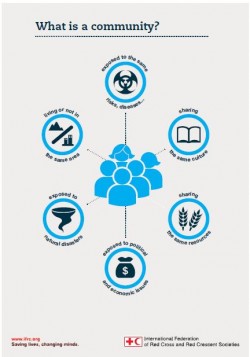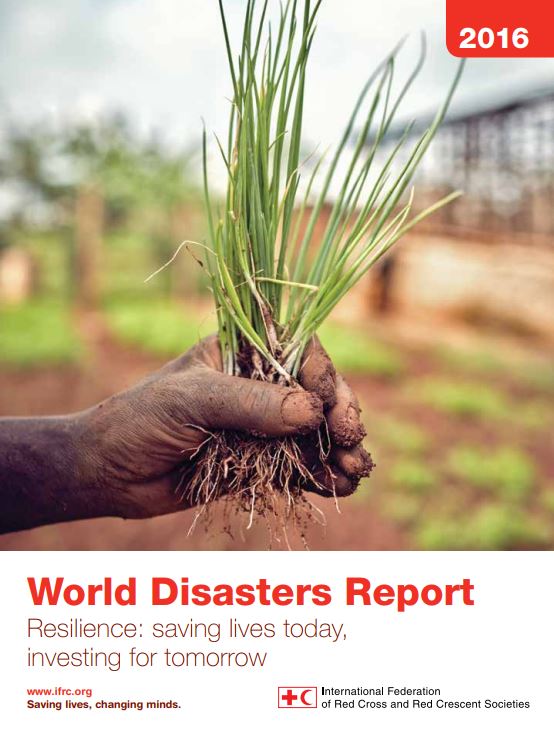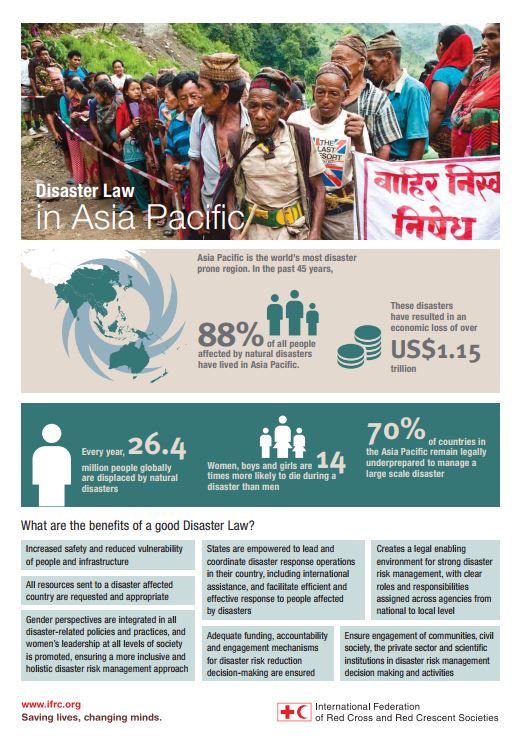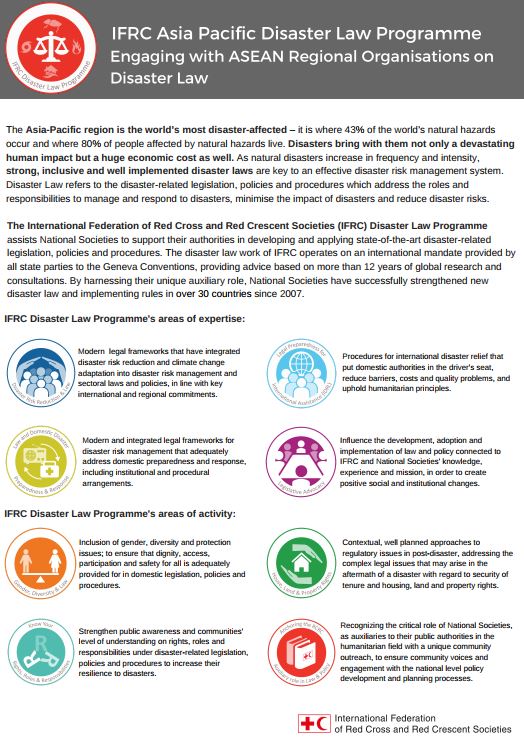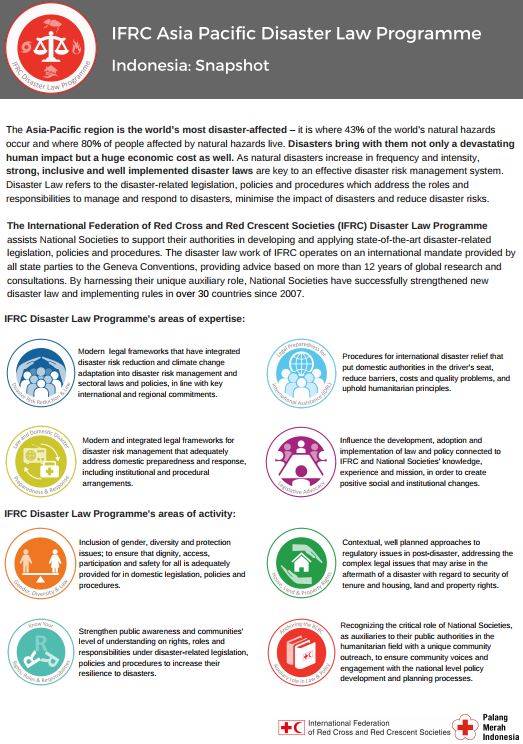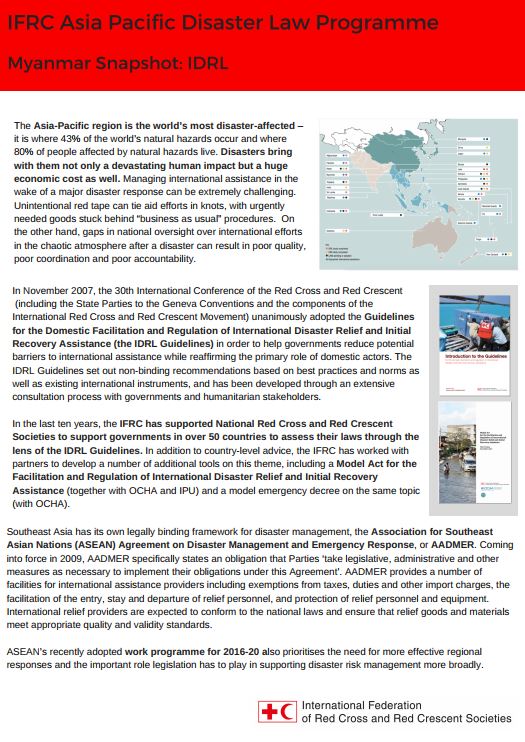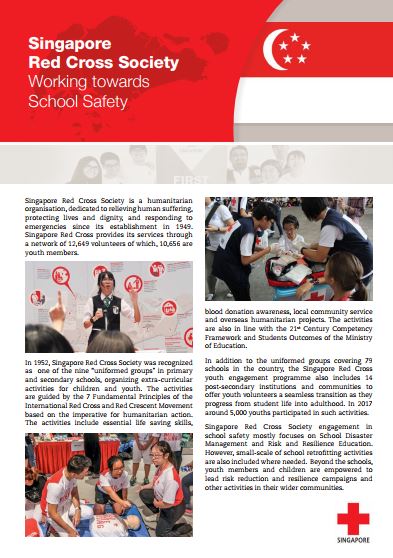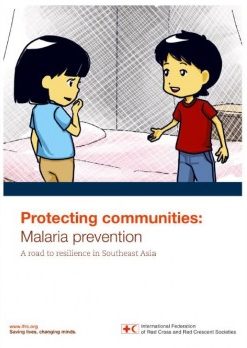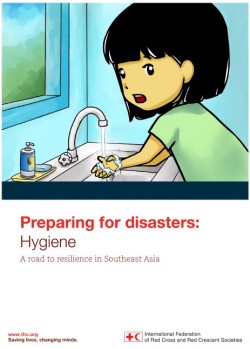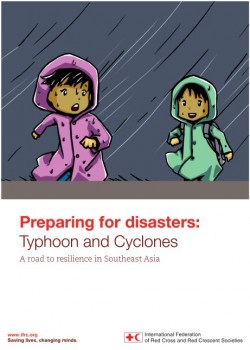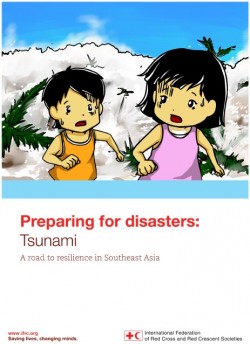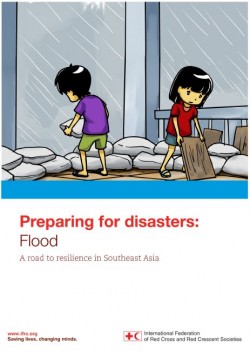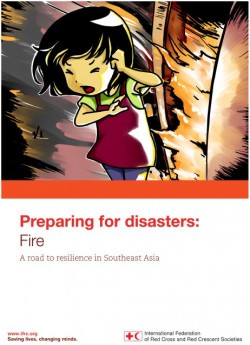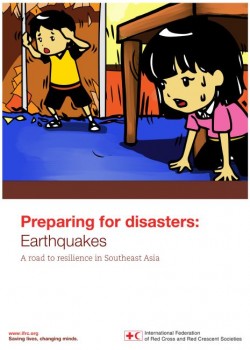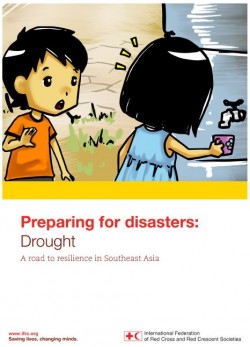These publications are used as resources by the Red Cross and Red Crescent Societies in Southeast Asia, and are available for download below. For low bandwidth, see this version.
Building and Strengthening Resilience
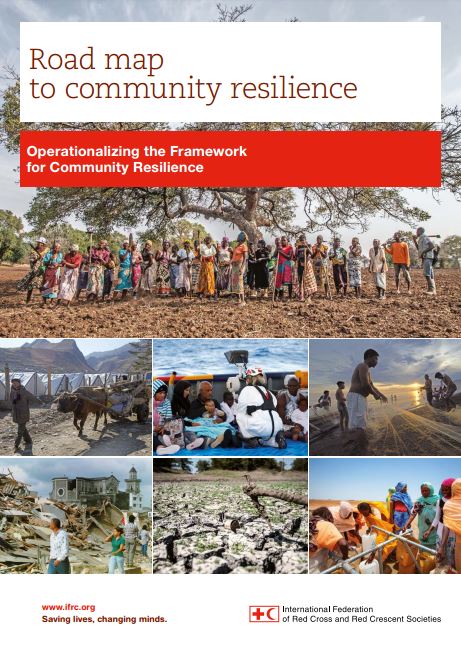
Road Map to Community Resilience: Operationalizing the Framework for Community Resilience
The Road Map provides step-by-step guidance on how to operationalize the International Federation of Red Cross and Red Crescent Societies’ Framework for Community Resilience (FCR). It will help you coordinate programme teams in your National Society or branch and work alongside other stakeholders to enable communities to become more resilient in the face of threats.
![]()
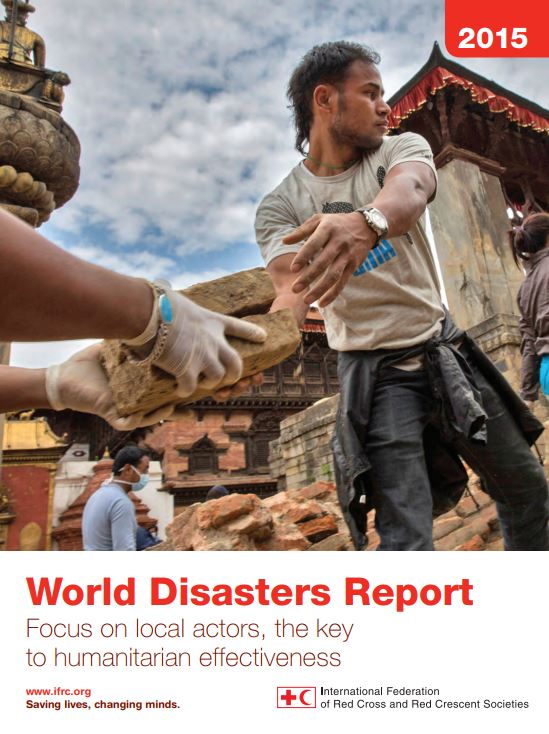
World Disasters Report 2015 – Focus on local actors, the key to humanitarian effectiveness
Local actors are often the most effective in conducting humanitarian operations. However, despite their critical role, they struggle to attract the funding and support they need. The 2015 World Disasters Report – launched today by the International Federation of Red…
![]()
Disaster Law : Strengthening disaster risk governance to manage disaster risk
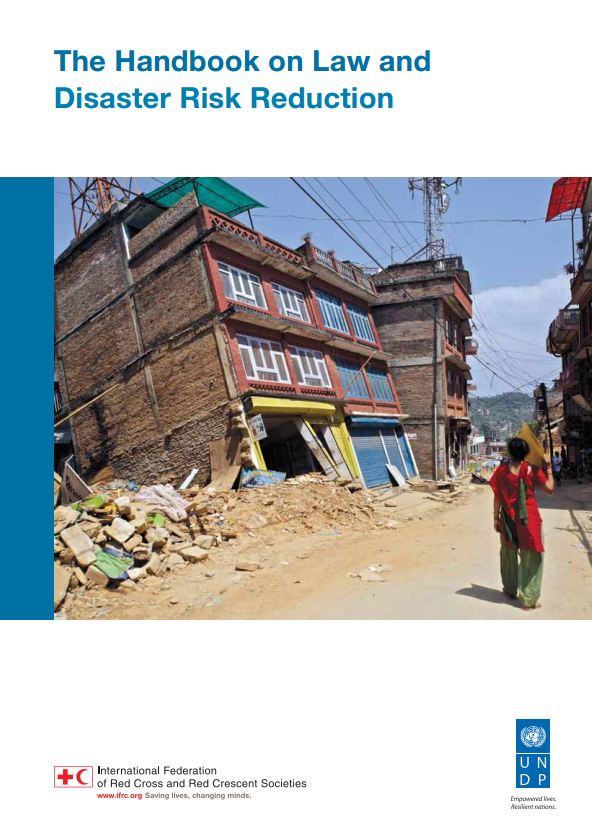
The Handbook on Law and Disaster Risk Reduction – Disaster Law
The Handbook and Checklist on Law and Disaster Risk Reduction (the Checklist) aim to support countries to identify the DRR-related strengths and gaps in their current legal frameworks, identify where greater focus may be needed on implementation and enforcement, and identify whether drafting or amending legislation is necessary. Additionally, it is expected that the process of convening a range of stakeholders in a common dialogue to respond to the Checklist questions will contribute to the improved implementation of a sound legal framework for DRR.
![]()
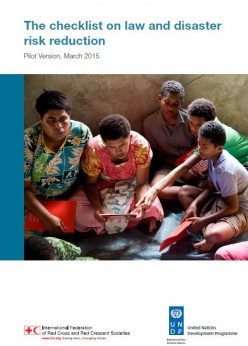
The checklist on law and disaster risk reduction (pilot version – March 2015)
The Checklist provides a prioritized and succinct list of ten key questions that lawmakers, implementing officials, and those supporting them need to consider in order to ensure that their laws provide the best support for Disaster Risk Reduction.
![]()
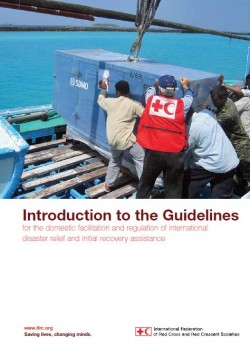
Introduction to the Guidelines for the Domestic Facilitation and Regulation of International Disaster Relief and Initial Recovery Assistance (IDRL Guidelines)
This document presents guidelines for the Domestic Facilitation and Regulation of International Disaster Relief and Initial Recovery Assistance (the IDRL Guidelines). The guidelines are a set of recommendations to governments on how to prepare their disaster laws and plans for the common regulatory problems in international disaster relief operations. They advise them as to the minimal quality standards they should insist upon in humanitarian assistance, as well as the kinds of legal facilities aid-providers need to do their work effectively.
![]()
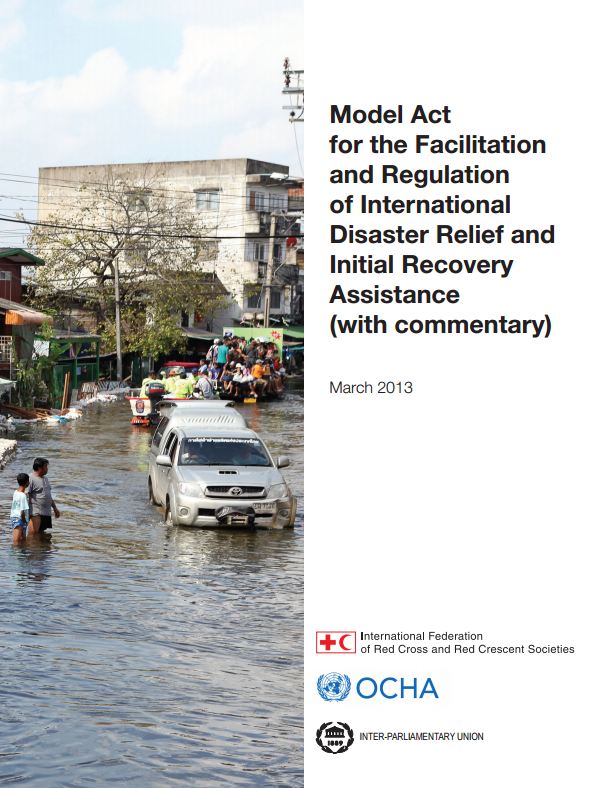
Model Act for the Facilitation and Regulation of International Disaster Relief and Initial Recovery Assistance (with commentary)
The Model Act is intended as a reference tool for voluntary use by disaster management officials and/or legislators who wish to develop domestic legislation, regulation, and/or procedures in their countries for managing potential future international disaster assistance.
![]()
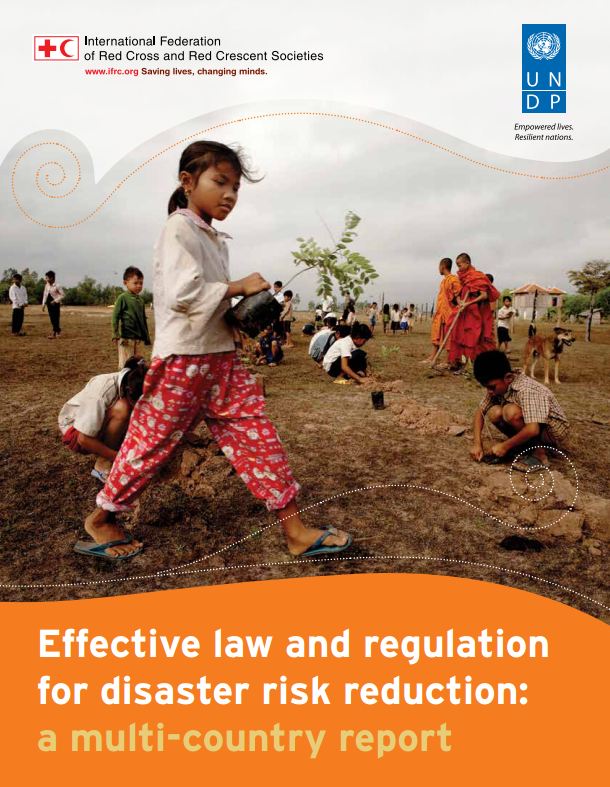
Effective law and regulation for disaster risk reduction: a multi-country report
This report aims to support legislators, public administrators, disaster risk reduction (DRR) and development practitioners and advocates to prepare and implement effective disaster risk management (DRM) legal frameworks for their country’s needs, drawing on examples and experience from other countries.
![]()
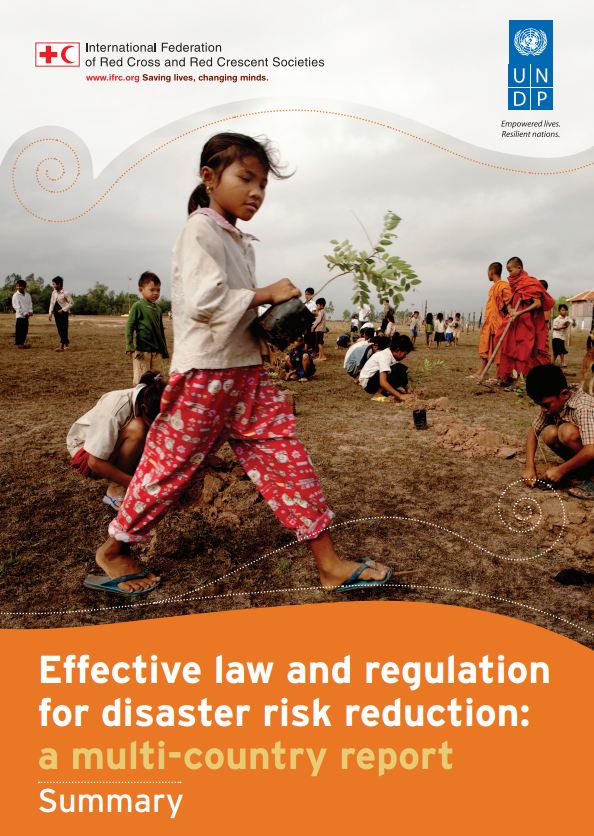
Effective law and regulation for disaster risk reduction: a multi-country report (Summary)
This report aims to support legislators, public administrators, disaster risk reduction (DRR) and development practitioners and advocates to prepare and implement effective disaster risk management (DRM) legal frameworks for their country’s needs, drawing on examples and experience from other countries. For this purpose, the report has looked at aspects of different countries’ legislation according to how it addresses relevant themes in the HFA, as well as issues identified by state parties and the International Movement of the Red Cross and Red Crescent in a 2011 International Conference resolution.
![]()
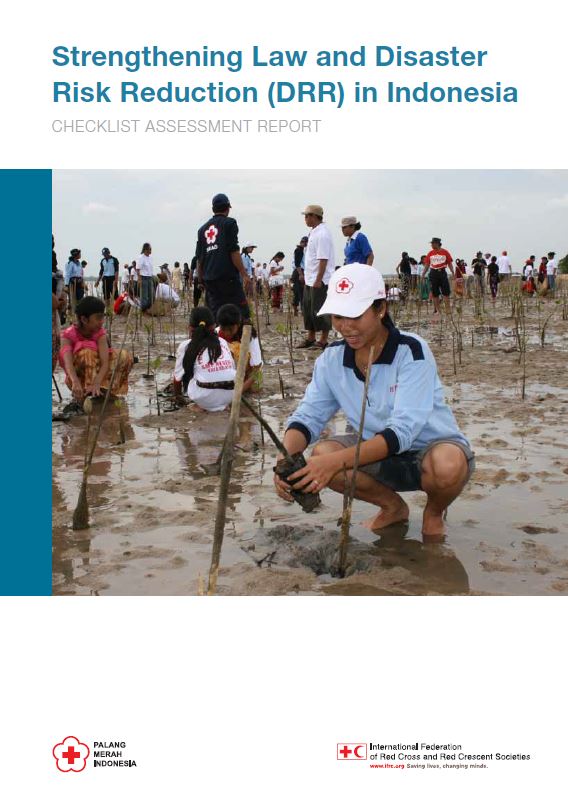
Strengthening Law and Disaster Risk Reduction (DRR) in Indonesia – Checklist Assessment Report
This report is the result of an integrated research process that combined desk-based legal research with stakeholder interviews in-country, followed by a multi-stakeholder consultation workshop held in February 2016 to verify the research findings and explore relevant issues with participants. It provides a ‘legal mapping’ of the laws and regulations that address disaster risk reduction (DRR) in Indonesia, analysing them against the questions contained in the Checklist and assessing their implementation based on stakeholder feedback and secondary sources.
![]()
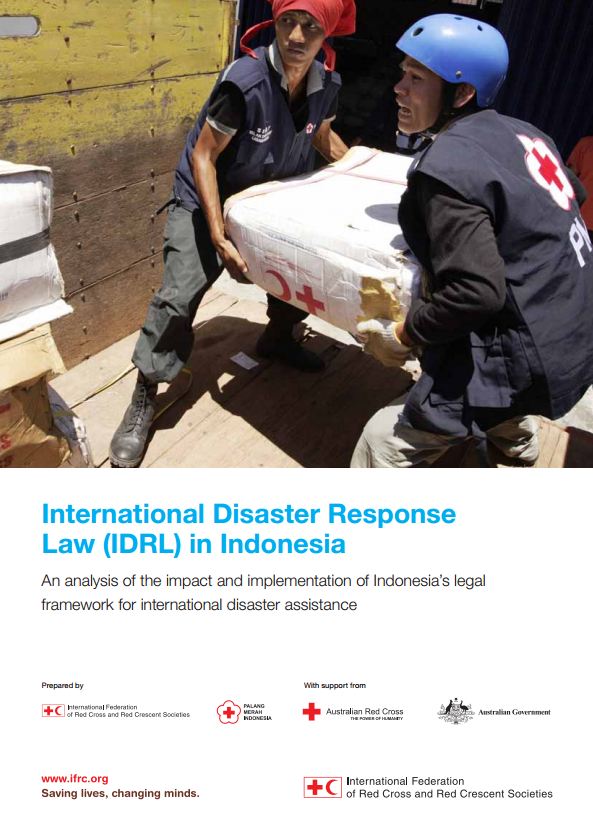
International Disaster Response Law (IDRL) in Indonesia Report
This report reviews the key chapters of Indonesia’s disaster management law of 2007 and its ancillary regulations relating to international assistance, discussing the new agencies that it established and the legal framework which spans from pre-disaster, to emergency response, to post-disaster management.
![]()
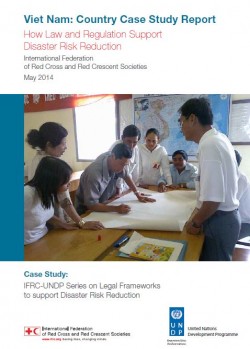
Vietnam: Country Case Study Report. How Law and Regulation Support Disaster Risk Reduction
This case study explores the extent to which legal frameworks in Vietnam support national and local disaster risk reduction (DRR) efforts against natural hazards. It covers a wide range of law and regulatory issues including the integration of DRR into disaster management laws, institutional arrangements, liability, early warning systems, infrastructure, building codes, land use planning, environmental management/climate change adaptation, awareness-raising and education.
![]()
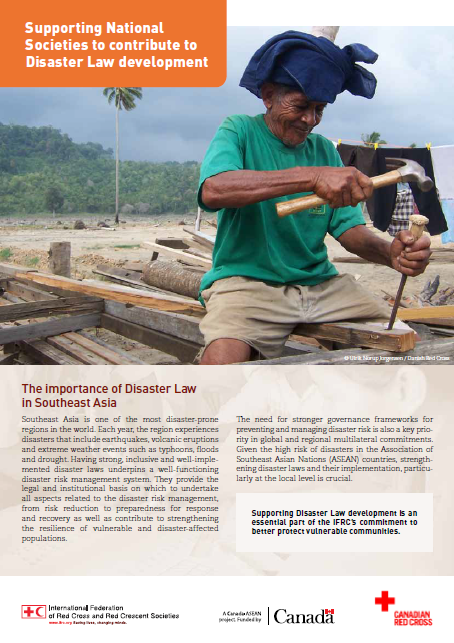
Case Study: Supporting National Societies to Contribute to Disaster Law Development
This four-page case study describes IFRC’s works on disaster law development in South-East Asia, with the highlight focus in the progress in Indonesia and Lao PDR. It also discusses an inclusion of gender and diversity issue in the country’s disaster law draft and the way forward to implement the work in region.
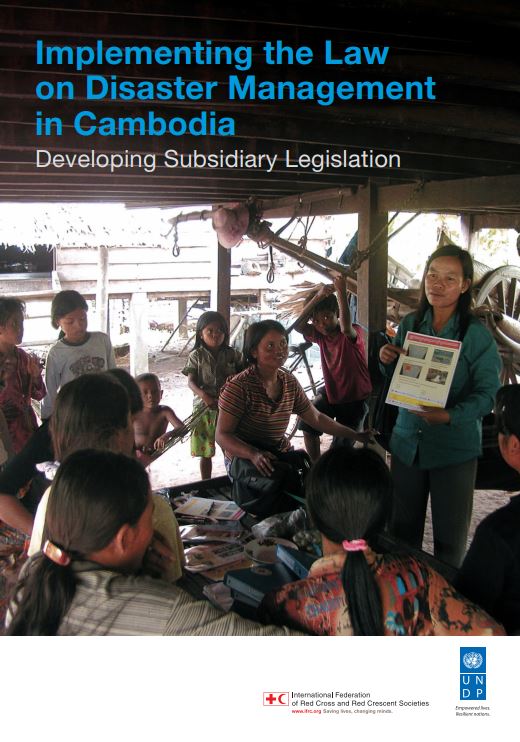
Implementing the Law on Disaster Management in Cambodia – Developing Subsidiary Legislation
In June 2015 Cambodia’s legislature passed the Law on Disaster Management (DM Law). This represents a major shift from an institutional system for disaster management based only on subsidiary legislation, which had been in place since 1995, to a broader…
![]()
School safety: Investing in disaster risk reduction for resilience
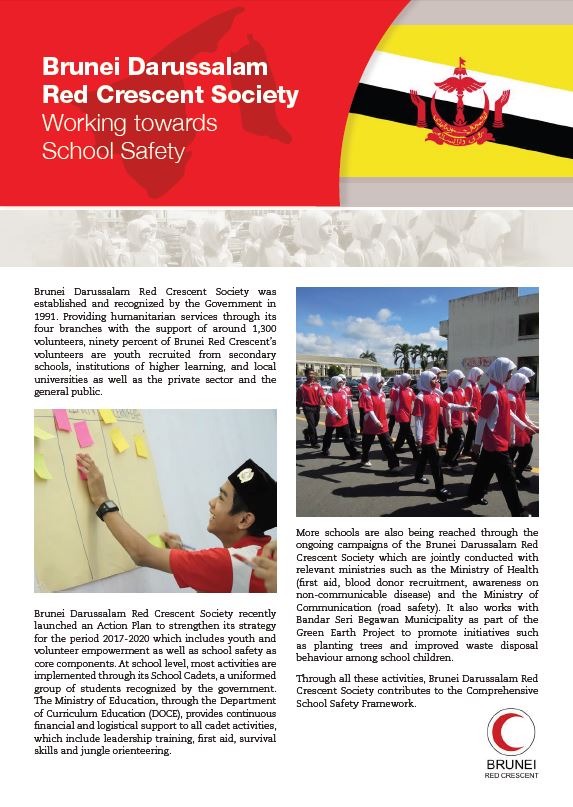
Brunei Red Crescent Society working towards school safety
This brochure highlights and maps Brunei Red Crescent Society activities to support school safety, including the challenges and way forward. The activities are grouped following the three pillars of Comprehensive School Safety. This document is made available for other ASEAN…
![]()
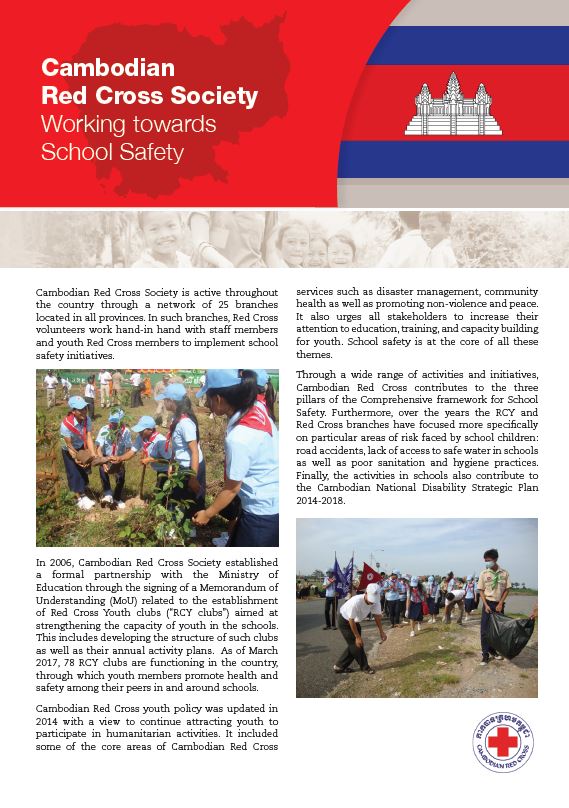
Cambodian Red Cross Society: Working towards school safety
This brochure highlights and maps Cambodian Red Cross activities to support school safety, including the challenges and way forward. The activities are grouped following the three pillars of Comprehensive School Safety. This document is made available for other ASEAN countries,…
![]()
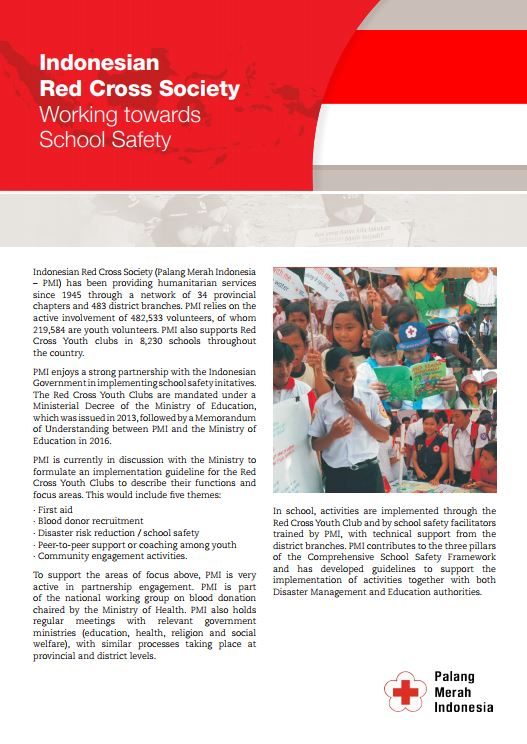
Indonesian Red Cross Society: Working towards school safety
This brochure highlights and maps Indonesian Red Cross Society (PMI) activities to support school safety, including the challenges and way forward. The activities are grouped following the three pillars of Comprehensive School Safety. This document is made available for other…
![]()
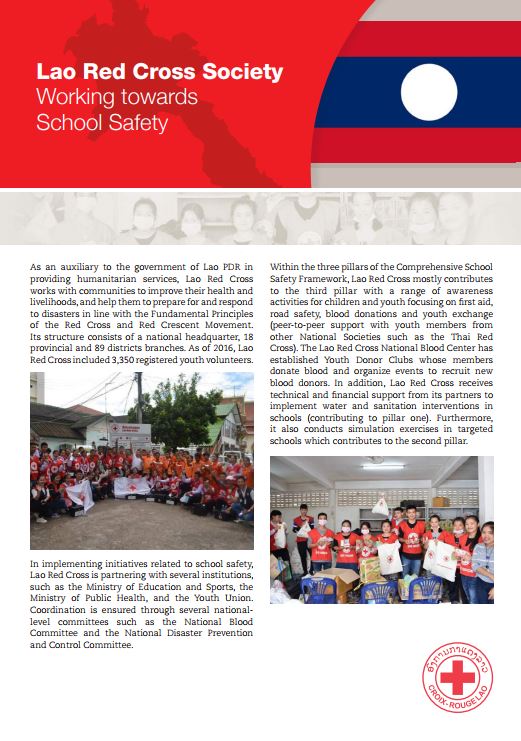
Lao Red Cross Society working towards school safety
This brochure highlights and maps Lao Red Cross Society activities to support school safety, including the challenges and way forward. The activities are grouped following the three pillars of Comprehensive School Safety. This document is made available for other ASEAN…
![]()
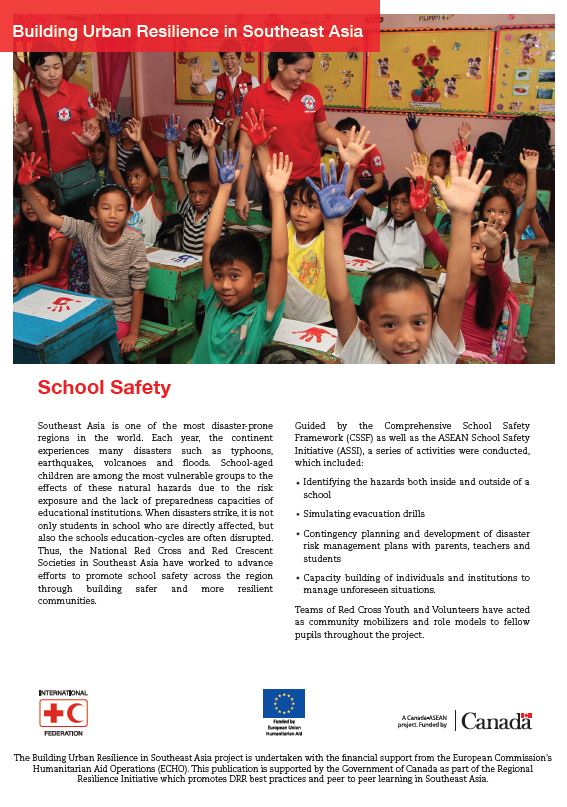
Case Study: Building Urban Resilience in Southeast Asia – School Safety
The case study highlights Philippine Red Cross and Cambodian Red Cross’ contribution to all three pillars of the Comprehensive School Safety Framework, which include: Building safe learning facilities, establishing school disaster management capacities and promoting risk reduction and resilience education in…
![]()
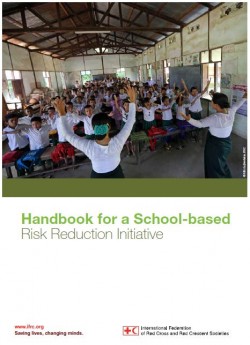
Handbook for a School-based Risk Reduction Initiative
This handbook presents basic content and tips for implementing a school-based risk reduction programme. It is organised into five modules: its importance; approach and process; activities to benefit children up to five years old; activities for students aged 5–17; and activities for young people and volunteers aged 17–24. These modules are based on good practice from around the world, although they build on the Comprehensive School Safety model for South-East Asia.
![]()
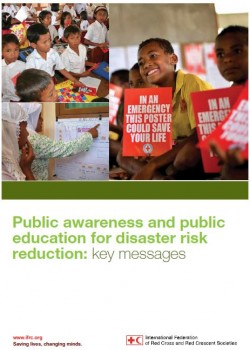
Public Awareness and Public Education for Disaster Risk Reduction: Key Messages
Purpose Harmonised messaging is a key goal in disaster reduction awareness, and is particularly important when it comes to scaling-up efforts to create a culture of safety. To promote consistent actions to the public this document sets out the key…
![]()
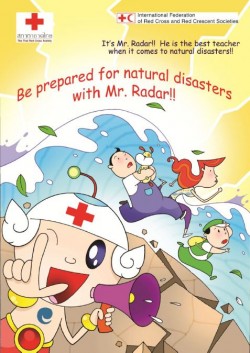
Comic Book – Be Prepared For Natural Disasters with Mr. Radar
Preparing for Disasters with Mr. Radar is a comic book produced in English and Thai language in order to promote learning among children in Thailand on immediate and long-term climate risks.
Through this comic book, children as part of community are informed to act in preparation for future disasters, and their knowledge will have long-term relevance to contribute to the safety and well-being of their communities. In a wider scale, the animation could help empower the community to take disaster risk reduction, preparedness and resilience actions.
![]()
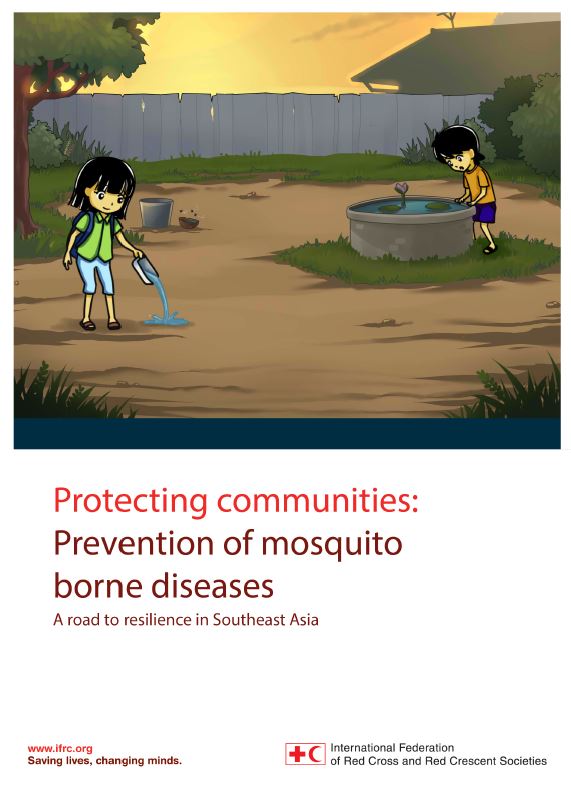
Comic Book: Protecting Communities – Prevention of Mosquito-Borne Diseases
This comic book is a children-friendly tool to support school safety, to raise awareness and prevention of mosquito-borne diseases such as dengue, zika and chikungunya, with the key messages: clean up, cover up and keep it up.
![]()
Gender and diversity: ensuring inclusion in disaster risk reduction to achieve resilience
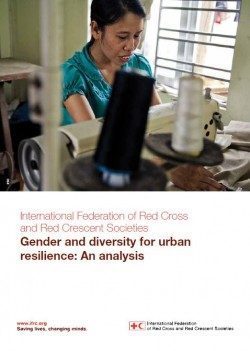
Gender and diversity for urban resilience: An analysis
This document looks at urban risk reduction: examples of gender and diversity-based risks and vulnerabilities in urban areas; social and economic inequalities to consider in urban environments; migrants; disability; and examples of gender and diversity vulnerabilities in urban disaster response and recovery. The paper also looks at Gender-Based Violence (GBV) in terms of key issues of GBV during and after disasters, and key action points for addressing GBV in Disaster Risk Reduction/Disaster Management (DRR/DM).
![]()
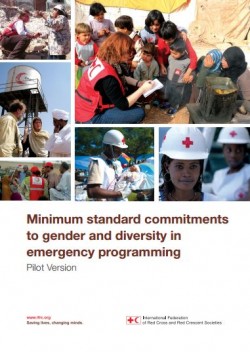
Minimum Standard Commitments to Gender and Diversity in Emergency Programming – Pilot Version
The Minimum Standard Commitments for each sector are based around a framework of: dignity; access; participation; safety; and internal protection systems. The checklist provides specific indicators which an organisation can use to rate its progress (achieved, partially achieved, not achieved and not applicable), justify its score and propose next steps. This checklist provides a quick tool for assessing compliance with the Minimum Standard Commitments in Emergency Programming for Red Cross / Red Crescent staff and volunteers in: emergency health; food security; water, sanitation and hygiene; emergency shelter; livelihoods; non-food items and disaster risk reduction. It serves as a tool for organisations to mark progress and identify their next steps.
![]()
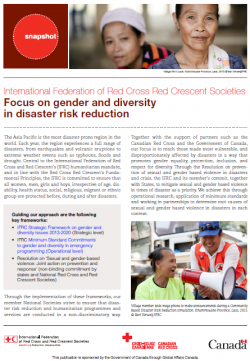
Snapshot focus on gender and diversity in disaster risk reduction – May 2016
The document highlights the focus on gender and diversity in disaster risk reduction, by aligning with the Sendai Framework and forging networks and partnerships. It also highlights the intersection with disaster law and risk governance and demonstrating the focus in country level examples, such as in Thailand, Myanmar and the Philippines.
![]()
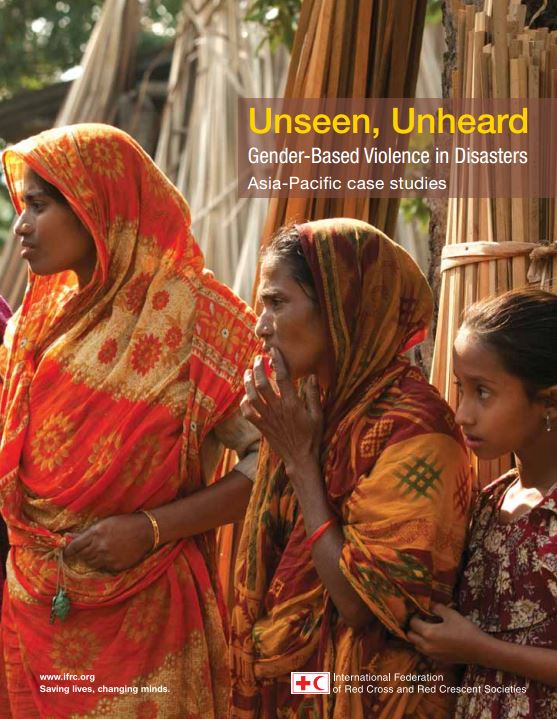
Unseen, Unheard: Gender-Based Violence in Disasters. Asia Pacific case studies
This report follows on from the global study Unseen Unheard: gender based violence in disasters which saw research being conducted in 9 countries globally, and included Bangladesh, Myanmar and Samoa from the Asia Pacific region. The Asia Pacific case studies provide an overview of gender-based violence (GBV) within each country context, as well as presenting findings and key recommendations with regards to 1) Awareness and understanding on GBV occurrence during disasters; 2) Availability and access to services; 3) Safety and security and; 4) Livelihoods and migration.
![]()
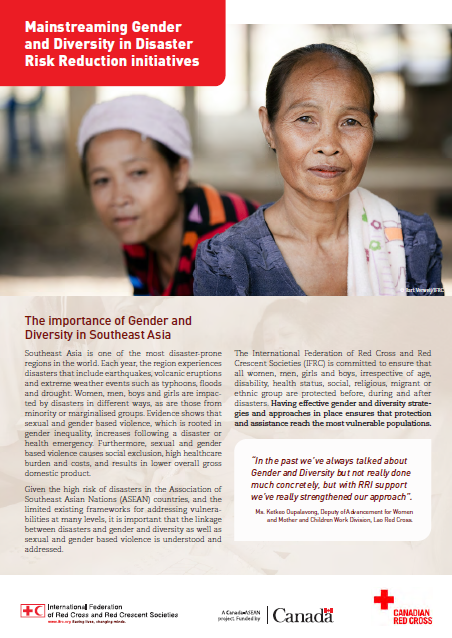
Case Study: Mainstreaming Gender and Diversity in Disaster Risk Reduction Initiatives
This four-page case study launched on the occasion of the International Women’s Day on 8 March 2017 showcases the importance of Gender and Diversity mainstreaming within Disaster Risk Reduction policies, strategies and programmes, with a focus on South East Asian countries.
![]()
More case studies
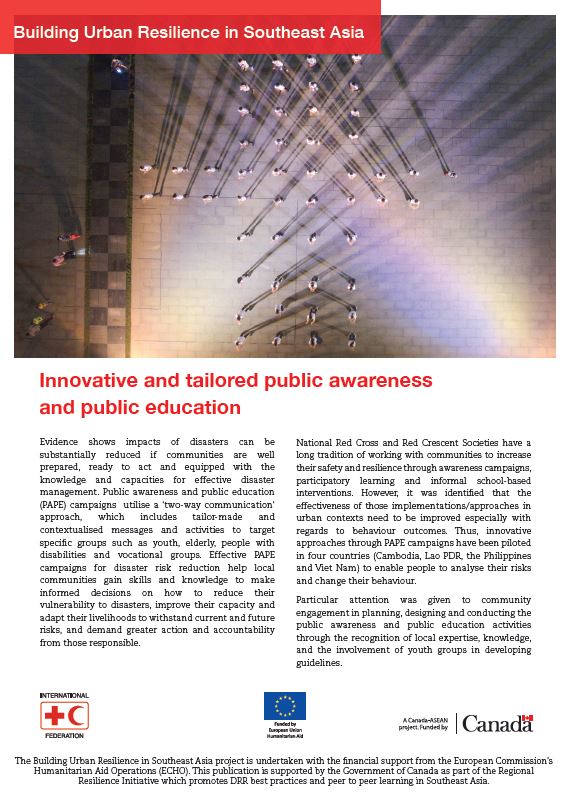
Case Study: Building Urban Resilience in Southeast Asia – Innovative and tailored public awareness and public education
The case study is extracted from the Building Urban Resilience in Southeast Asia, an ECHO-funded project, which features innovative approaches through public awareness and public education campaigns to enhance community safety and resilience, piloted in Cambodia, Lao PDR, the Philippines…
![]()
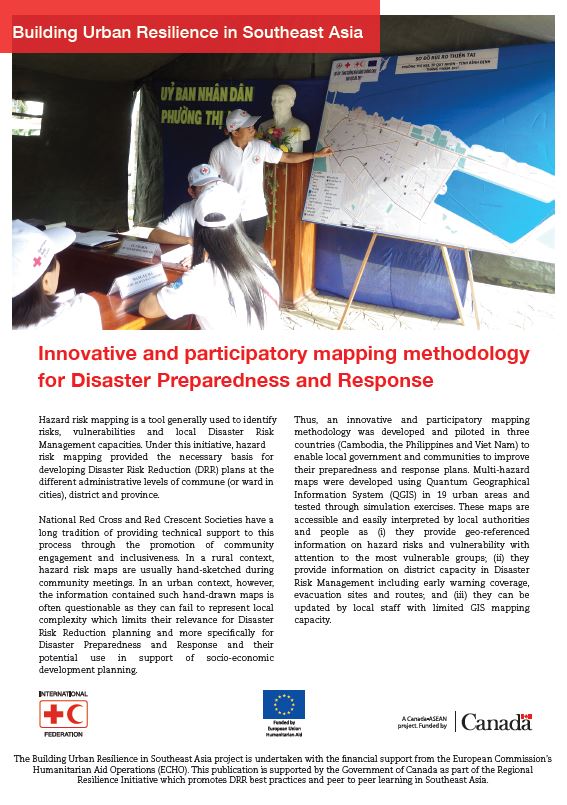
Case Study: Building Urban Resilience in Southeast Asia – Innovative participatory mapping methodology for disaster preparedness and response
Hazard risk mapping is a tool generally used to identify risks, vulnerabilities and local Disaster Risk Management capacities. Under this initiative, hazard risk mapping provided the necessary basis for developing Disaster Risk Reduction (DRR) plans at the different administrative levels…
![]()

Case Study: Building Urban Resilience in Southeast Asia – School Safety
The case study highlights Philippine Red Cross and Cambodian Red Cross’ contribution to all three pillars of the Comprehensive School Safety Framework, which include: Building safe learning facilities, establishing school disaster management capacities and promoting risk reduction and resilience education in…
![]()
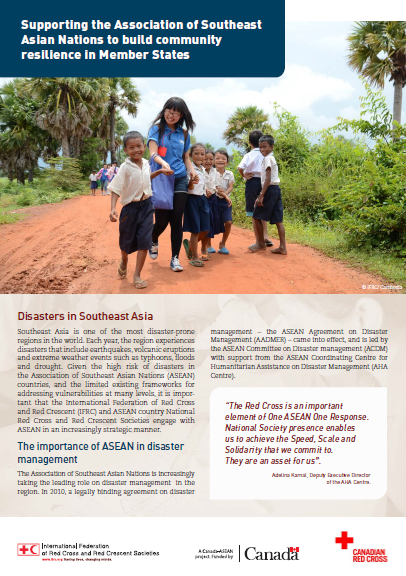
Case Study: Supporting the Association of Southeast Asian Nations to build community resilience in Member States
This four-page case study describes IFRC’s works to support the Association of Southeast Asian Nations (ASEAN) to build community resilience. It highlights the importance of ASEAN in disaster management and key component of IFRC/s work at the national and regional levels. It also discusses IFRC’s support to the implementation of the ASEAN Agreement on Disaster Management (AADMER) Work Plan and the way forward to implement the work in the region.
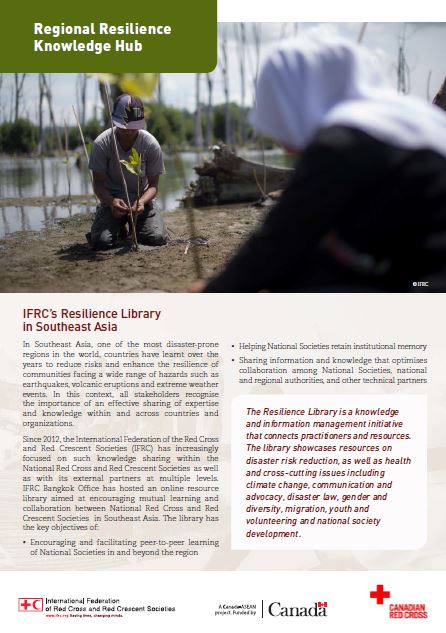
Case Study: Regional Resilience Knowledge Hub
This four-page case study describes IFRC’s works on this resilience library, a visionary and wide-ranging resource hub which aims to encourage mutual learning and collaboration between National Red Cross and Red Crescent Societies in Southeast Asia. It describes about the features and how the resilience library contributes as the knowledge sharing platform in this region.
![]()
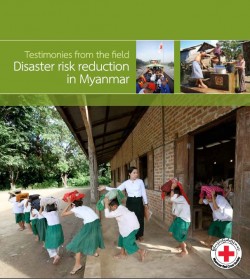
Testimonies from the Field – Disaster risk reduction in Myanmar (2009 – 2013)
This photo-book in English and Myanmar languages, aims to capture some of the key successes and good practices of the program at the community level which could be used to disseminate the impact of the work of Myanmar Red Cross and…
![]()
For more information, please contact: Marwan Jilani, at marwan.jilani@ifrc.org
![]()


